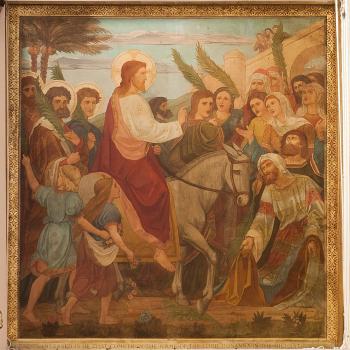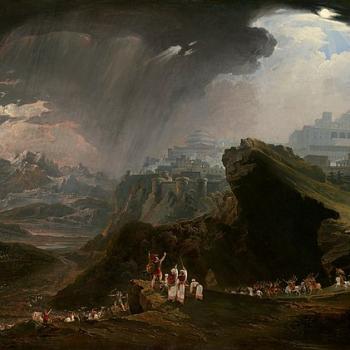The teachings of the New Church are based on the Old and New Testaments, along with the divinely-inspired theological works of Emanuel Swedenborg (usually referred to as the Writings or the Heavenly Doctrine). Swedenborg was an 18th-century scientist who, at the age of 56, began to have visions of heaven and hell. Shortly afterwards, he writes, he was commissioned by God to write the books that we now refer to as the Writings. In total he wrote 25 volumes on topics ranging from the nature of the spiritual world to the inner meaning of the Bible. With all those books, newcomers to Swedenborg often ask, Where should I start? The answer is: it depends what you’re looking for. I’ve put together a guide to the different books that can be a good starting point depending on what you’re looking for; older translations of these can be found for free online (and available here as PDFs), and newer translations are available for purchase through Amazon.com and most other bookselling sites. Hope it’s helpful!
Overview of New Church Teachings
The New Jerusalem and Its Heavenly Doctrine (1758) or True Christian Religion (1771): For those looking for a concise overview of New Church teachings, The New Jerusalem and Its Heavenly Doctrine is a good place to start. It is a short book, and as such it does not go into detailed explanations or Scriptural confirmations, but it does provide a general picture of the essential teachings of the New Church. True Christian Religion is a much longer work, usually published in two volumes in its English translations, and goes into more detail, with more Scriptural references, as well as including short accounts of various experiences Swedenborg had in the spiritual world.
Descriptions of Heaven and Hell
Heaven and Hell (1758): Heaven and Hell (full title, Heaven and its Wonders and Hell From Things Heard and Seen), is Swedenborg’s most popular and influential work. In it, he describes the nature of spiritual reality, going through details about heaven, hell, and an intermediate state called the World of Spirits. In essence, he writes, hell consists of people who love themselves and things of the world more than anything else; heaven consists of people who primarily love their neighbour and the Lord.
Philosophical Explanations of God’s Work in the Universe
Divine Providence (1764): Divine Providence (full title: Angelic Wisdom Concerning the Divine Providence) tackles some of the big questions: why there is evil in the world, how humans can have free will even though God is omnipotent and omniscient, and the purpose of life. It is a companion work to Divine Love and Wisdom (1763; full title Angelic Wisdom concerning The Divine Love and the Divine Wisdom), which deals especially with the way that God acted (and continues to act) as Creator of the universe.
Scriptural Basis for New Church Teachings
Four Doctrines (1763; published separately as Doctrine of the Lord, Doctrine of the Sacred Scripture, Doctrine of Life, Doctrine of Faith): Some people who are familliar with Swedenborg only through Heaven and Hell accuse him of basing his doctrine primarily on contact with spirits, rather than from Scripture, even though Heaven and Hell does contain many scriptural references. But Swedenborg himself wrote in his final work, True Christian Religion, “I affirm that … from the first day of that call I have not received anything whatever pertaining to the doctrines of that church from any angel, but from the Lord alone while I have read the Word.” The Four Doctrines contain pages showing how the teachings of the New Church are drawn directly from Scripture.
The Inner Meaning of the Bible
Apocalypse Revealed (1766): The Writings for the New Church teach that there is a deeper sense within every part of the Lord’s Word. The two works that explore this in detail are Arcana Coelestia (1749-1756), which explores the internal sense of Genesis and Exodus, and Apocalypse Revealed, which explores the internal sense of the book of Revelation. Arcana Coelestia (Latin for “Heavenly Secrets) is a much longer work, 8 thick volumes in Latin, and usually published in 12 volumes in English. Although Arcana Coelestia contains some of the most powerful passages in all of the Writings, it can be a bit daunting because of its size; Apocalypse Revealed, one volume in Latin and usually two volumes in English, may be a little less intimidating.
New Church Teachings on Marriage
Conjugial Love (1768; also published as Married Love): Conjugial Love (full title: The Delights of Wisdom Relating to Conjugial Love, followed by the Pleasures of Insanity Relating to Licentious Love) explores the New Church teachings on marriage: that it stems from the marriage of love and wisdom within the Lord, that it joins two people as one, and that true marriages last to eternity.











